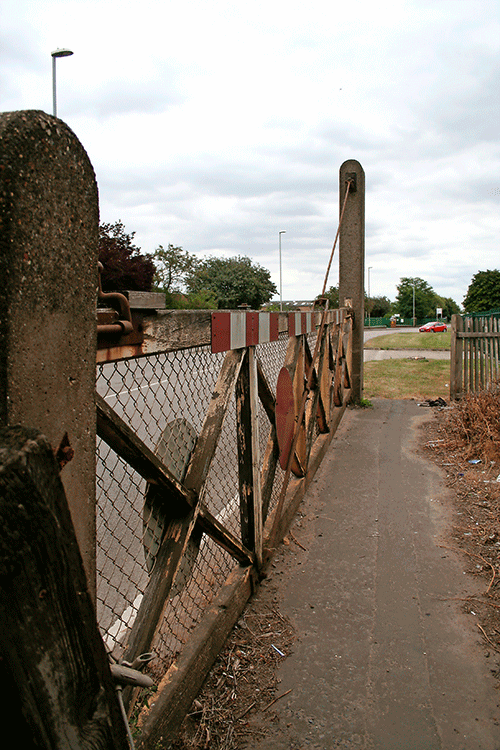 Read the peer reviews for this article
Read the peer reviews for this article
Unbending and almost unbroken, a pair of rails cuts across the Fens. They rust gently, having last carried a train around 15 years ago. The impression is of a slumber that could be broken with just a little romantic vision, some effort with weed killer, and the changing of one or two sleepers.
This might sound like the start of a story from the 1960s - the genesis of a successful heritage railway, perhaps. But the scene is 2016 and the tale is of an opportunity not only to re-open a railway, but also to prove that our national network can help to make local economies thrive, just as they did when they were first built. In other words, this is the front line of the battle to remain relevant.
The Cambridgeshire market town of Wisbech was first connected by rail in 1847, when the line from March opened. As so often in the early wave of railway mania, other lines followed and within two decades the town was served by two stations, each on their own through line to King’s Lynn. Both had branches to the harbour.
In the 1880s Wisbech’s place in railway history was cemented with the opening of the eccentric (and partly on-street) steam tramway that carried passengers and agricultural produce from the farms into the town.
But just as surely, decline followed expansion. One by one the routes disappeared, and the town can no longer boast of any station. With a community of 30,000 people it is one of the largest in the country without one, according to campaigners who would like that to change.
The first line to arrive was the last to disappear. The dead-straight (and almost as flat) line from March closed to passengers in the late 1960s and was subsequently singled. Crucially, however, it remained open to an eclectic mix of freight flows, the last of which (to a pet food factory) came to an end in 2000.
The goods yard has been lost to factory expansion and the station site to housing development, but the rails still tantalisingly remain. Since the last tail lamp disappeared over the horizon, a momentum has developed apparently heading towards re-opening.
Among the first to press the case locally was a preservation group. In 2003 it christened the route ‘The Bramley Line’ after the once-regular fruit traffic. Richard Gilbert is the joint vice-chairman.
“We would like to restore a heritage element to the line. Ultimately we would like to offer a heritage train service on special occasions. That’s probably more achievable if the line were to re-open as a commercial entity to Network Rail.”
So the group’s aims are not in conflict with a full-scale re-opening for passengers?
“That re-opening would make our aims much more achievable.”
The group counts around 70 members, and having been granted a licence by Network Rail to occupy a depot at Waldersea (roughly halfway between March and Wisbech), it knows the infrastructure well.
“There are patches where it is very overgrown, but these are 300-yard stretches at most,” confirms Gilbert. “The rest of it is clear and fully tracked. The main bridge is over a 40-foot drain and the steel appears to be in good order. There are small culverts that need attention.”
So far so achievable, albeit at a cost that would significantly stretch the pockets of a small company. For commercial traffic, the line will likely need completely relaying.
But where the story does diverge from the railway revivals of the 1960s is in the one feature that distinguishes this otherwise unremarkable permanent way. In just seven and a half miles there are nearly two dozen level crossings.
Some are barely there, just pedestrian gates at the end of footpaths or farm track occupation crossings. Others are unlikely survivors of a bygone age - wooden swing gates operated by train crews. Then there are some over B-roads with long defunct automatic half-barrier equipment, or even automatic locally-monitored open crossings with no barriers. Remarkably the A47 Wisbech bypass, which carries tens of thousands of vehicles every day, is crossed using the latter (although here the rails have been removed).
Finally, the line reaches Weasenham Lane in Wisbech itself (another train crew-operated gate crossing). Here the rails have been removed altogether and this tendril of the network gives up the ghost.
With speed restrictions at some crossings of 10mph, plus the time taken to open and close gates, it would be a seriously slow ride. But that hasn’t stopped raw local passion keeping up the pressure to return Wisbech to the railway map - indeed, the society believes most of the crossings could be closed.
Gilbert continues: “It would have an enormous benefit on connectivity to the rest of the network and Cambridge itself. For the passenger traffic, yes it would be a slow build-up. But as soon as people start thinking of wages levels and the opportunities in Cambridge and the relative costs of setting up in Wisbech, there would be a snowstorm, I think - with people wanting to move to Wisbech and build there. I think it would be closely followed by a significant industrial opportunity.”
The group is not alone in its belief and persistence. In 2009 the Association of Train Operating Companies produced its Connecting Communities report, and on the back of ever-increasing passenger numbers it kicked off in optimistic mood.
“This report seeks to complement recent and ongoing studies into options for capacity enhancement by looking at other opportunities to connect communities which have grown in recent years but which do not have good access to the rail network. In particular... schemes which could be delivered relatively quickly, through short links to (or new stations on) existing lines, and by making use of freight lines (current or recently closed).”
Re-opening the line to Wisbech, upgrading the level crossings and providing a new station was listed in the appendices as a scheme that would cost £12 million with a Benefit:Cost Ratio of 1:1 (higher when the capital expenditure was taken out of the calculation). This put it about halfway down the list of projects ATOC considered, and it called on the Department for Transport to develop a policy to safeguard promising routes.
However, most of the political and financial muscle so far has come from local government - namely Cambridgeshire County Council, which remains the prime mover today.
“We have great prosperity in the south of the county and the reverse in the north of the county,” says Bob Menzies, the council’s Director of Strategy and Development.
“The north is poorer, there are fewer job opportunities, educational attainment is less. It’s quite marked. It’s almost like the north-south divide across the country runs through Cambridgeshire. We have a situation in Wisbech that a lot of people in the county are a good hour and a half away from Cambridge. If we get the railway line re-opened between Wisbech and March and get (ideally) through trains from Wisbech to Cambridge, we could have journey times of half that.”
So it isn’t just about serving a population now, it’s about creating opportunities in the future?
“Absolutely. At the moment people from Wisbech don’t go to Cambridge because it’s quite a journey. They would look more to Peterborough for shops, education, employment - or even to King’s Lynn. They travel east-west, not north-south. It’s this access to employment in the south of the county - the higher value jobs. It’s not about a transport problem in itself. It isn’t a congestion problem from Wisbech to Cambridge (apart from the outskirts of Cambridge), but it is about creating new journeys - journeys that don’t take place at the moment.”
Building a business case for investment based on potential future gain, rather than immediate bums on seats, is the first of the challenges that need to be met and overcome before Wisbech can welcome trains again. It is also, of course, only one side of the balance sheet.
To answer the ‘how much?’ question, the county council has commissioned two reports. In April 2014 consultant Atkins examined the capital cost of the reinstatement project, effectively taking the scheme to GRIP (Governance for Railway Investment Projects) stage one, the first of an eight-step process towards delivery.
In this model it was assumed that trains would run at up to 60mph, that work would be required at the March and Wisbech ends, and that there would be costs associated with reinstating or removing level crossings. In particular, a level crossing over the A47 was thought to be no longer desirable or permissible, meaning that a road over rail bridge would be required. From that, two further options followed: provide a new station in Wisbech itself; or terminate at the A47, build a station there and dispense with the road bridge and the last mile of track.
Atkins determined that reinstating the line to Wisbech centre would cost £35m, with a further £12m needed to build the A47 bridge. In the second option (where the line stops at the A47), the cost falls to a little under £31m.
Analysing the Benefit:Cost Ratio, the town centre option performed better, although the study was based on Wisbech to March shuttle services only, without trains running further afield.
A year later Mott McDonald picked up the feasibility baton and took the project to GRIP2. This study looked in more detail at the work required to the infrastructure, including potential new station sites and the level crossings. In addition, comprehensive analysis of the layout at the March end of the line was carried out. Here remodelling and resignalling work will be required to enable through services from Wisbech to call at (currently out of use) platforms at March before continuing towards Ely.
Again an upbeat conclusion was reached: that there were “viable engineering and timetable options for the reinstatement of a passenger rail service from Wisbech to March and beyond to Cambridge”.
However, another challenge now presented itself. Further afield at Ely, pathing constraints mean that currently only one Wisbech-Cambridge service per hour would be possible. Furthermore, the costs had leapt up again.
“The range of cost for the service options is approximately £41m to £65m, excluding optimism bias, risk and opportunity. These values are £70m to £111m including risk and optimism bias but excluding opportunity,” the report said. Signing off, the authors added: “Any GRIP stage 3 option selection study should also specifically address the opportunities to close level crossings.”
GRIP2 is where the project currently remains. But undeterred by the rising capital commitment, Menzies is clear about what the county council wants - and it isn’t just the cheapest or easiest solution.
“The issues that have emerged from GRIP2 are primarily twofold. One is capacity on the existing lines through Ely North Junction, which is a bottleneck for the whole area. It’s that connection through to Cambridge that really makes a difference, rather than just a shuttle between Wisbech and March.
“I’d ideally like to see a train every half an hour from Wisbech through March and Ely into Cambridge. That links with other things we’re doing like Cambridge North, which Network Rail is leading and is now happening, but we kicked it off and got it moving.
“The second issue is level crossings. We’ve always assumed that where it crosses the A47 we will need to build a bridge. Network Rail’s starting point is we need to get rid of all the level crossings. We turned round and said: ‘well, it is flat and straight and visibility is excellent. Are these crossings really high risk?’”
Safety at level crossings is understandably a national talking point. From the terrible tragedy at Ufton Nervet in 2004, when a man took his own life and killed six others by parking his car in the path of an oncoming InterCity 125, to the deaths of two teenage girls in 2005 at Elsenham. Each life lost echoes through grieving families, their pain resonating long after the inquiries and court cases have been concluded, the fines paid and any recommendations implemented.
With more than 6,000 crossings on our railways, not for nothing does Network Rail produce chilling safety films to warn of the dangers. Fortunately (according to NR’s own figures), in a typical year the number of actual collisions with cars or pedestrians remains low. However, the near misses - particularly involving pedestrians - remains stubbornly high, reaching 258 in 2015-16.
NR has publicly stated its policy as being “committed to reducing the risk at level crossings… where reasonably practicable we will seek to close and/or divert crossings”. And most pertinently in the Wisbech story: “Only in exceptional circumstances shall we permit new crossings to be introduced onto the network.”
Perhaps one could argue that these are not new crossings, although that leads into a debate of semantics versus statistics. In
16 years a whole new generation of drivers will have taken to the roads in the area never imagining that they will see a train on the line.
Says Menzies: “In the Fenland area there is a lot of open countryside with not many people. We’ve done a study with Network Rail, which we’ve funded, where they have costed closing all the crossings. It increases the cost of re-opening by around 50%. It’s £100m and you’re adding between £40m and £50m.
“Where a conventional transport business case isn’t that robust - mainly relying on the wider economic benefit - that’s difficult. We need a common sense approach. Some of these places, the minor roads, you can stand there and hear the birds singing. Nobody comes, nobody goes. Network Rail’s starting point is ‘can we get rid of all the crossings?’”
Do you find that frustrating?
“They are charged with reducing risks at level crossings, which is absolutely fine. We have over 100 in Cambridgeshire and we can understand that, but it’s not seeing the bigger picture. For example, Wisbech is entirely served by single-carriageway A-roads. Single-carriageway rural A-roads are the most dangerous type of road you’ve got, so there’s a risk there.”
However, far from running into the sand drag that sinks some schemes, talks are under way to rationalise the seeming impasse and move forward. A local MP called a meeting in mid-2016, which in turn led to a workshop between Network Rail level crossing specialists and the local council to discuss the crossings. Disappearing into vegetation it might be, but the Bramley Line is firmly on the industry radar.
The crossing issue has even made it to the desk of Ian Prosser, Her Majesty’s Chief Inspector of Railways. His team would ultimately sign off a safety case for re-opening, and in an exclusive interview for RailReview, he reveals his approach is more pragmatic than dogmatic.
“You would want to check what is reasonably practical, safe operation, in terms of the whole thing - including the level crossings,” he says.
“There are a lot of level crossings - some that are high risk and would be closed, and some that are low risk. It would be grossly disproportionate to spend a lot of money trying to close crossings which would kill the project. One thing everyone has agreed on - and this includes the county council and the local people - is that previously when this line was in operation it just had AHB , which are higher risk. Nobody wants to reinstate them.”
Prosser has visited the line to personally examine the issues: “We do realise we can’t close them all. Some of the roads might need to be bridged, but they would be those with the highest traffic flows. As for some of the foot crossings… it would be grossly disproportionate to put up a footbridge in the middle of the Fens for maybe one person using it a day.”
Two inspectors from Prosser’s team also attended the recent round table workshop with Network Rail, to look for practical and safe solutions.
“I think they found common ground, and certainly Network Rail is up for trying to get to a sensible place. But one mustn’t just focus on level crossings here. Really what needs to happen here is the project needs to be taken to the next GRIP stage, so we can have a clear view of what the best options are.
“The traffic flows into Wisbech need to be understood. Where is the best place to put the station? The business case would want it as close to the centre as possible, which is understandable, but they also have to think about the traffic flows in the area and overall costs.”
So how people get to the station safely?
“Yes. Their favourite choice is by a road, and would have a crossing right in front of it. I’ve sat and watched the traffic - it’s quite a busy road near a supermarket, and there are all those factors you have to take into account.”
What else?
“How the line is signalled - will it be signalled at all? There’s a need to look at drainage, proper surveying work, so we mustn’t get hung up on the crossings although it is a very important aspect.”
The third issue - enhancing capacity at Ely North Junction for the through services that Cambridgeshire County Council thinks are vital to success - remains. Remodelling of this junction has already slipped out of Network Rail’s Control Period 5, into CP6. Work is required on level crossings here, before extra tracks can be laid, and Campaign for Better Transport Executive Director Stephen Joseph says it is essential NR engages with every stakeholder.
“We’ve dug into this,” he says. “No one has worked out what the different demands for capacity around Ely are, and where Wisbech trains might fit in. This is a problem where nobody is taking responsibility for allocating capacity for different operators across a contested network.
“Where does Cambridgeshire fit in? As the local guardians of the public benefit they should be able to say ‘hang on a minute, we think we’ve got a good case for this capacity’. Talking to ordinary non-metropolitan authorities like Cambridgeshire has not been part of NR’s DNA at all. All of these problems seem to me to be fixable, provided somebody wants to do it.”
Joseph is also in no doubt about the significance for the industry of the line to Wisbech: “I think this re-opening and these wider ambitions are a test case for the railway. This is an authority that wants to invest in rail and more importantly is a powerhouse for the British economy. It wants to make sure future development is rail-connected, therefore the railway is serving the future and not just the past.
“The railway needs to be able to step up to the plate and find the ways of making these sorts of things happen, rather than find excuses for them not happening.”
Network Rail says it is engaged in the process, and following the level crossing workshop in early August 2016 it offered a statement:
“We are fully supportive of the aims of the March to Wisbech scheme in regard to driving the potential for growth and regeneration in the area. Following the initial pre-feasibility report on a rail connection between March and Wisbech, we challenged some of the assumptions made - in particular, around level crossings and also on the ability to run trains through to Cambridge on the existing infrastructure, due to known difficulties in the Ely area.
“We have been working closely with Cambridgeshire County Council, local stakeholders, the Department for Transport and the Office for Rail and Road to ensure that the scheme is developed in a pragmatic way, which safeguards the existing network and allows for efficiencies to be made where possible.
“This is a unique project, and it has required collaborative approach from all parties. We hope that following the most recent piece of work, which was a workshop looking at the solution required for all 22 level crossings on the line, we can better advise the business case and help funders make an informed decision on progressing the project to the next stage (GRIP3).”
Touring Wisbech in March of this year, then Communities Secretary Greg Clarke praised the scheme, saying it should be seen “as an investment, not as a special favour to Wisbech. It is an opportunity to invest in the prosperity of our country.”
A month before that, then Secretary of State for Transport Patrick McLoughlin had made a speech touting the line as an example of how the newly established city regions can steer their own destiny.
“That’s the way we have seen a reversal of some of the Beeching cuts. Finding ways to bring trains back to towns that should never have lost them and whose growth requires them… places such as Tavistock and Wisbech, which have well-advanced plans,” he observed.
Both men have since changed jobs, but the former is now the Business Secretary, a brief that would seem naturally complementary to his views.
Wisbech and its rail link are not short of warm words. And so far, money has been forthcoming from an ambitious authority anxious to use the railways to make a difference.
“It is worth pursuing,” concludes Menzies. “It won’t solve all of Wisbech’s problems because there are things that will take a long time to address, but it is part of a package of making Wisbech a more viable place to live.
“There is a phenomenon of places around the country that are on the edge, that are a distance away from the centre of economic activity. I speak to colleagues in Suffolk and Norfolk and they have this as well, with coastal communities. Bringing them in, making them much more part of the country’s economic activity, must be the key to helping them.”
The will is clearly there. But can the way be found? Until further notice those rails remain quietly protecting a route upon which future generations may well come to depend.

It is said that Wisbech is one of the largest towns in the country without a rail link and the proponents of this scheme locally are clear that needs to change if the town is to be regenerated to its former glory. Although the building of a railway link does not (of itself) guarantee prosperity, it is clear that this often forgotten part of Cambridgeshire would benefit significantly.
There are grand plans locally for much-needed improvement of the town centre, and proposals are currently developing for a bid to become a new Garden Town with many thousands of new houses. But as is so often the case, these ambitions will not be realised without high-quality transport infrastructure - and what better infrastructure than a new railway?
In my experience, having a railway in your town is not just about the places it gives access to. It is about image and pride for the local area, and it really can make the difference.
The experience of Wisbech is repeated up and down the country, and for me it shows that the critical factors in delivering these sort of schemes are simply determination and clear purpose. Places like Wisbech are not necessarily the obvious ones for Network Rail or the Department for Transport to invest their scarce resources - there are clearly bigger and higher profile projects around. However, just look at the growth potential that can be unlocked by what are relatively modest investments, and the picture starts to change.
Wisbech for example, could be just 40 minutes by train from the tech and employment hot spot of Cambridge, where thousands of new jobs are being created every year but where average house prices are up to four times those in Wisbech. Cambridge is an area where major companies such as drugs giant AstraZeneca are moving in, but it is increasingly hard for them to find affordable accommodation for their employees. So Wisbech has a key role to play in the continued growth and prosperity of Cambridge, which in turn has never been more vital for the overall economic prospects for our country.
However, these are the measures that are not picked up in traditional scheme appraisal, which in the past has been focused very much in terms of direct costs and benefits from schemes. Having been involved in this business for many years now, I’ve seen lots of good schemes fail just because the narrowly defined Benefit:Cost Ratio does not meet set levels, despite the obvious wider and social benefits.
Thankfully things are changing now, and new methodologies being accepted by the DfT are now taking account of these ‘Wider Economic Benefits’ in scheme appraisal. This is likely to bring about a rebalancing between the very large and expensive projects and the smaller ones that do not have the headline impacts but which, in their own way, provide significant benefit.
Of course, this does not mean that schemes like Wisbech Rail are a done deal - they do still need to show value for public money. But it does allow the full story to be told and the real benefits to be highlighted. And looking at the case for Wisbech, it does in my view show the very strong case for the scheme. The regeneration benefits and contribution to broader national economic objectives are such that I am looking forward to the time soon when it cannot be said that Wisbech is the largest town without a rail connection, but instead one that has flourished in the new age of rail.

This is an important article about an important project. Wisbech deserves to get its railway back - not because of nostalgia, but from the enormous social and economic benefits a rail link would bring.
I would have liked to have seen more emphasis on these potential ‘external’ benefits and perhaps less rumination about the level crossing problem. Surely the key issue is to get the business case sorted and then address the many practical issues?
I would like to know more about this town of 30,000 souls – what they do, where they work, where they may want to travel to. The image I have of Wisbech is of a depressed, low-wage economy struggling in the face of many drawbacks - not least lack of connectivity to jobs and training in prosperous parts of Cambridgeshire. That’s what will ultimately make the case.
As Tom argues, Wisbech could be a test-bed for other re-openings. But it needs to look beyond engineering practicalities. The key quote in the article comes from Bob Menzies, of Cambridgeshire County Council: “There is a phenomenon of places around the county that are on the edge, that are a distance away from the centre of economic activity. I speak to colleagues in Suffolk and Norfolk and they have this as well, with coastal communities. Bringing them in, making them much more part of the country’s economic activity, must be the key to helping them.”
Yes, and it goes way beyond East Anglia, with many struggling, sizeable communities dotted around the coastline or near to it (Fleetwood, Louth, Mablethorpe, Hornsea), which once had a railway and thriving industries. Unsurprisingly, most of these places voted strongly for ‘Brexit’ as a protest against what has happened to their communities.
Part of the anger in such places goes back to the disinvestment of the 1960s, notably from Beeching’s cuts. After the railway went the traditional industries disappeared, young people left and towns decayed. And newer countervailing trends have brought their own tensions, including a major influx of migrant labour - many from eastern Europe doing low-paid jobs in the food industry. They become an easy target for wider frustrations and populist rhetoric. A new railway won’t resolve all these social tensions, but it’s a truism that racial tension is usually associated with stagnant economies and towns and communities in decline. The railway could be the catalyst for a much more cohesive, healthier and socially harmonious Wisbech, at peace with itself.
What might have been useful in the article would have been a comparison with other recent re-openings, as I remain hugely unconvinced by the methodologies applied by consultants in evaluating the case for rail re-openings. Borders Railway
campaigners argued endlessly with consultants and their paymasters that the patronage forecasts were far too pessimistic. The line was built with insufficient capacity based on these gloomy forecasts, and we’re now paying the price. Build in additional capacity to accommodate growth, make sure you get the railway where people want to go (the town centre, or as near as you can get) and look at other important aspects including station facilities.
The stations along the Borders Line, and indeed other re-opened routes such as Ebbw Vale, make me want to weep. They’re a lost opportunity. Why don’t we build in simple buildings where ‘things can happen’? Not old-fashioned booking offices, but community facilities and space for small businesses that really help to make the railway part of the local economic fabric. Wisbech is a perfect opportunity to do this and show that a new railway is much more than a means of getting from A to B, but the catalyst for real sustainable development - an energising spine across the Fens. Make a new Wisbech station a real gateway to the town and the Fens that’s much more than a waiting shelter and CCTV cameras. Make stuff happen there.
Tom presents the campaigners’ case for extending the service beyond March to Ely and ideally Cambridge. That’s absolutely right - an hourly shuttle to March (which with the best will in the world isn’t exactly a thriving metropolis) would doom the project to failure. Get to where people want to go - Cambridge, at least.
But there’s a need to look at the project from the other end. What happens at Wisbech? Where is the connectivity with local bus services? Cambridgeshire has a good reputation in promoting transport integration, and I was surprised at the lack of any mention about the potential for the rail link providing the hub for connecting transport services across the north of the county, to surrounding villages and tourist attractions - not least the coast.
Tom alluded to the campaigners’ desire to see a ‘heritage’ element. Much as I love railway heritage, I’m not convinced this is a very good idea if it diverts attraction from the core objective of rebuilding the railway, which is to support the regeneration of Wisbech and the surrounding area. If there is potential for bringing tourist trains into Wisbech (as with Tweedbank on the Borders Railway), that’s great - build in the capacity to allow it to happen. Not because it’s fun to do, but because of the impact of bringing a train full of tourists into Wisbech with money to spend. Let someone else worry about providing the traction and rolling stock, and marketing the service. Don’t let it become the main driver of the project. Without being unkind, the scenic attractions of the line between Wisbech and March won’t win any prizes - but Wisbech itself seems an attractive town with plenty to offer.
I remain unclear from the article about who is going to build this railway. Is it the campaign group, hoping to develop it as a traditional ‘heritage’ style re-opening, or are we talking about a serious addition to the network, led by Network Rail?
Surely it has to be the latter. This is a project that needs to happen soon, rather than wait ten or 15 years while worthy efforts are made to raise funds from jumble sales and tombolas. I’m not mocking voluntary effort (it’s great and has its place in rail development), but this should be a project of strategic importance led by big hitters - Cambridgeshire working with the Department for Transport and Network Rail, with an engaged train operator.
This also raises an interesting question: who would operate the trains? Abellio has just been awarded the contract for the East Anglia franchise, but I’m not aware of Wisbech featuring in the franchise documentation. But with East Midlands Trains (a franchise coming up for renewal) and CrossCountry operating through March, could it work as an open access operation with a path into London on the back of a new, reasonably non-abstractive service from north Cambridgeshire to the capital?
Wisbech seems to be one of the easier re-openings that
Campaign for Better Transport has identified. It has potential as a test-bed for other re-openings - not simply over ways of addressing technical issues, but as a catalyst for economic and social regeneration. These projects need a partnership between the more local players alongside strategic bodies including Network Rail and the DfT. We need to rethink the methodology used to evaluate business cases for re-opening and give more weight to the wider external benefits in regenerating struggling towns and communities that aren’t part of the charmed ‘city region’ network.

I suspect we all admire those who dedicate their own time to re-opening closed railway lines.
The motivations may be nostalgia and an interest in railway heritage, or an ambition to be re-connected to the national network with a ‘proper’ train service. Sometimes promoters want both, as in the Wisbech-March case . And why not? The funding routes are very different, and who knows at the outset which is most likely to succeed?
The Wisbech (Bramley Line) preservation group was launched in 2003. Positive support for service reinstatement (centred on commuting to Cambridge) from the county council, seeking redress for its own version of a north-south divide, came later.
Wisbech re-opening had already appeared in the Virgin/Stagecoach bid for the Intercity East Coast franchise in 2000 - the bid that had everything in it to challenge the incumbent franchisee GNER, to whom Sir Alastair Morton was intent on granting a long-term 20-year deal. In those days the ‘Peterborough Effect’ still had currency, so any feeder traffic to the trunk line seemed worth exploring. And as Tom Ingall points out, this was the year when freight use of the line finally disappeared. What could be so hard about introducing a passenger service?
Level crossings is the main answer - over 20 of them, large and small. Wisbech bypass (A47) will need to be bridged to access the town centre, it seems. And there is a worry about rail route capacity through Ely, although that problem may yet be solved by the Freight Network Study.
Creating a simple passenger service on a flat, level nine-mile right of way comes out at an astonishing capital cost of £100 million. The alarm bells are ringing - there had better be good evidence on benefits… and proper consideration of alternatives. On these key subjects, we are told very little.
The closest we get is the ATOC estimate in its 2009 Connecting Communities study, which found a Benefit:Cost ratio of 1.1:1. But back then ATOC had the capital costs at a paltry £12m. I recall the Rail Minister at the time (Andrew Adonis) greeting the ATOC report with scepticism, despite his own local rail service campaigning in the past. Why (he asked) was there such enthusiasm to restore old railway lines which typically had closed from lack of use, when we required backing for new lines where they were most needed?
What the ATOC report was primarily interested in (and Wisbech was a good example) was reconnecting places that had dropped off the railway map, and that usually means building or restoring a branch line. But as Professor Mark Casson has pointed out in The World’s First Railway System (OUP, 2009), branch lines were the bane of Britain’s rail network, not its strength. Secondary lines in the planned rail networks of continental Europe typically connected at both ends, at junctions with main lines.
A recent study by Greengauge 21 into the case for re-opening the ex-LSWR route between Exeter and Plymouth serves to highlight the importance of avoiding branch lines that don’t link at both ends. The study contrasted the current plan to open the route from Bere Alston to Tavistock (which would create two disconnected high-subsidy branch lines - Exeter-Okehampton and Plymouth-Tavistock) with a complete through route Plymouth-Tavistock-Okehampton-Exeter. Instead of two town/city pair connections, there are six - plus a diversionary route into the bargain. The benefits start to multiply. Through service to Waterloo anyone?
Take another example: East West Rail, the link between Oxford and Cambridge. I don’t want to discourage, but as long ago as 1994 I was engaged in the first study of this project by the multiple local authorities that the line serves (Ipswich BC was in the lead).
Here, the first (easy) stage involves re-opening an out-of-use line between Bicester and Bletchley. As with the Devon example, this connects two big places (Milton Keynes and Oxford) that are both parts of the national rail network already, as well as serving some key intermediate towns. It improves overall network coherence, providing a diversionary route for freight and even (DfT has mused) for long-distance cross-country trains as well as local services. Yet 22 years on, funding is still not in place.
Wisbech was on not one but two through routes. The March-Wisbech line extended to Watlington, on the Ely-Kings Lynn line. How much more worthwhile would route restoration be if it allowed Peterborough-Wisbech-Kings Lynn trains as well as Wisbech-Cambridge? OK, the cost would double, and penetration to Wisbech town centre would have to be ruled out, but the benefits could be so much greater. Kings Lynn-Birmingham New Street, anyone?
But we are assessing at this point a simple branch from March to Wisbech, designed to support (it is hoped) a new Wisbech-March-Ely-Cambridge train service. To make the investment case, I suspect it will be essential to think strategically and for Cambridgeshire County Council to find a way to commit to significant housing expansion in Wisbech, scoped (in part, at least) to respond to the Cambridge growth phenomenon. Meanwhile, let’s go back to that question of lower-cost alternatives.
Nowhere does Tom provide an account of the public transport that is currently on offer at Wisbech, or a discussion of how it could be improved. Surely there are some much lower-cost options that would have to be put up for comparison? After all, bus services, over distances like Wisbech-March/Kings Lynn/Peterborough are generally commercially viable and subsidy-free.
What’s on offer may surprise some readers. For starters there’s a half-hourly FirstGroup X1 express bus that links Norwich, Dereham, Lynn, Wisbech and Peterborough (the last two linked in just over 40 minutes). And then there are Stagecoach local routes 46 and 56 from Wisbech to March serving intermediate places, each running hourly through the day.
Can you commute from Wisbech to Cambridge? Yes, take the 0650 bus to March, and after a 13-minute connection take the 0731 train that gets into Cambridge at 0810.
The idea is that a re-opened railway could shorten the bus leg of this journey and potentially take out the need to interchange, taking 20 minutes off the journey time, leaving an hour’s commute. But what if the Wisbech-March bus segment was part of the Anglia Railways franchise, with through ticketing, a speeded-up bus journey and guaranteed timetable connections with facilities for luggage and disabled access, too? Dreamland? No. Standard practice in many European countries.

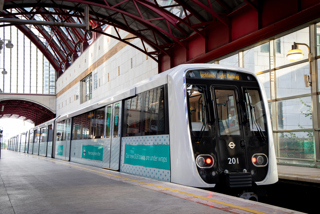
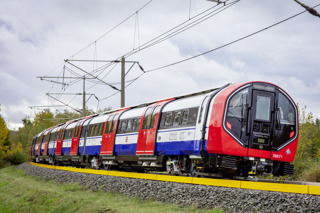

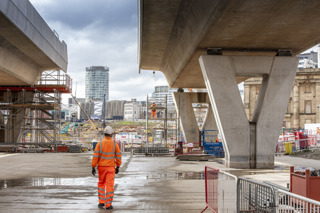
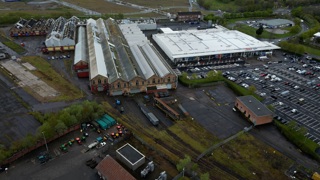


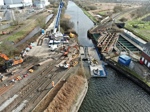








Login to comment
Comments
No comments have been made yet.